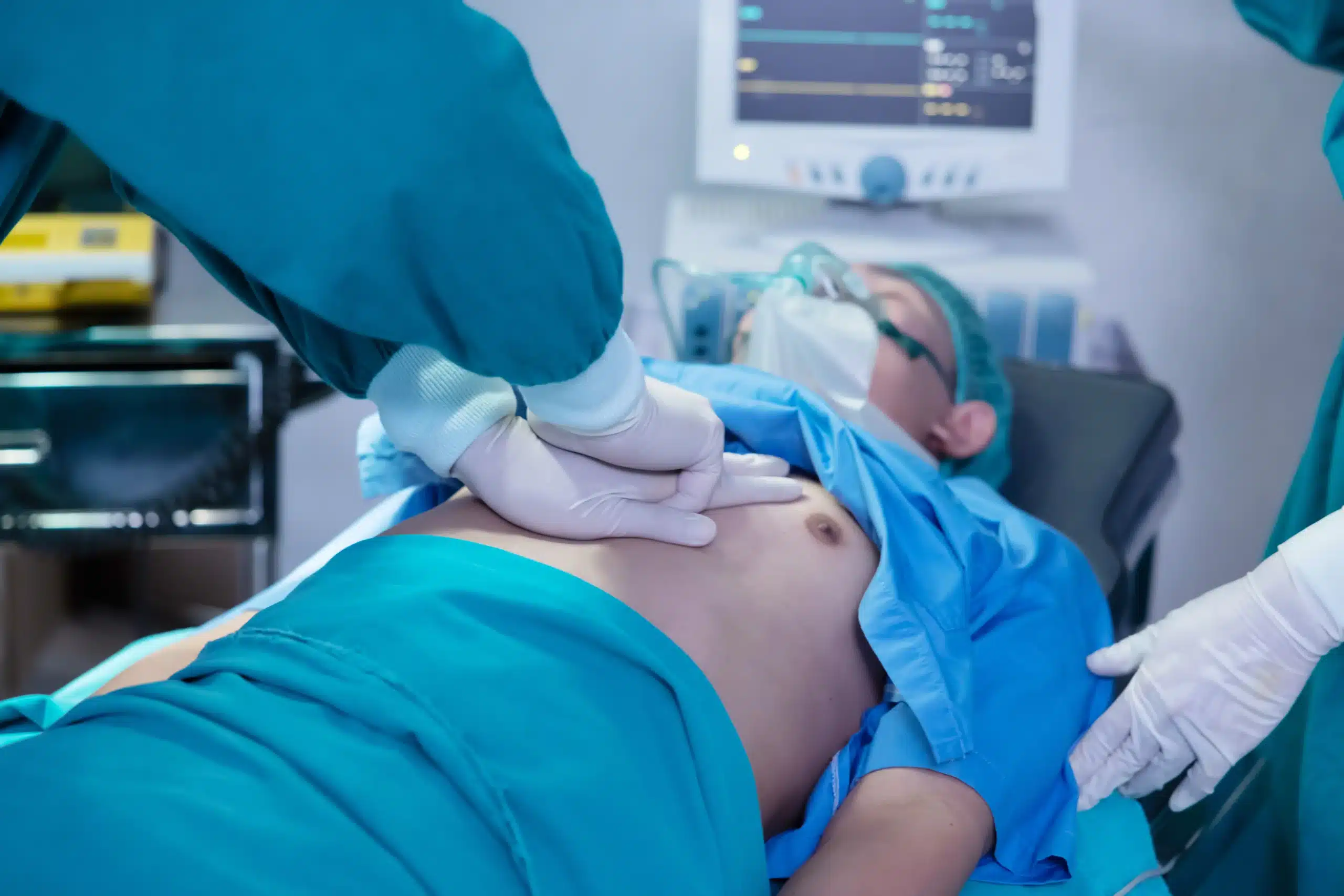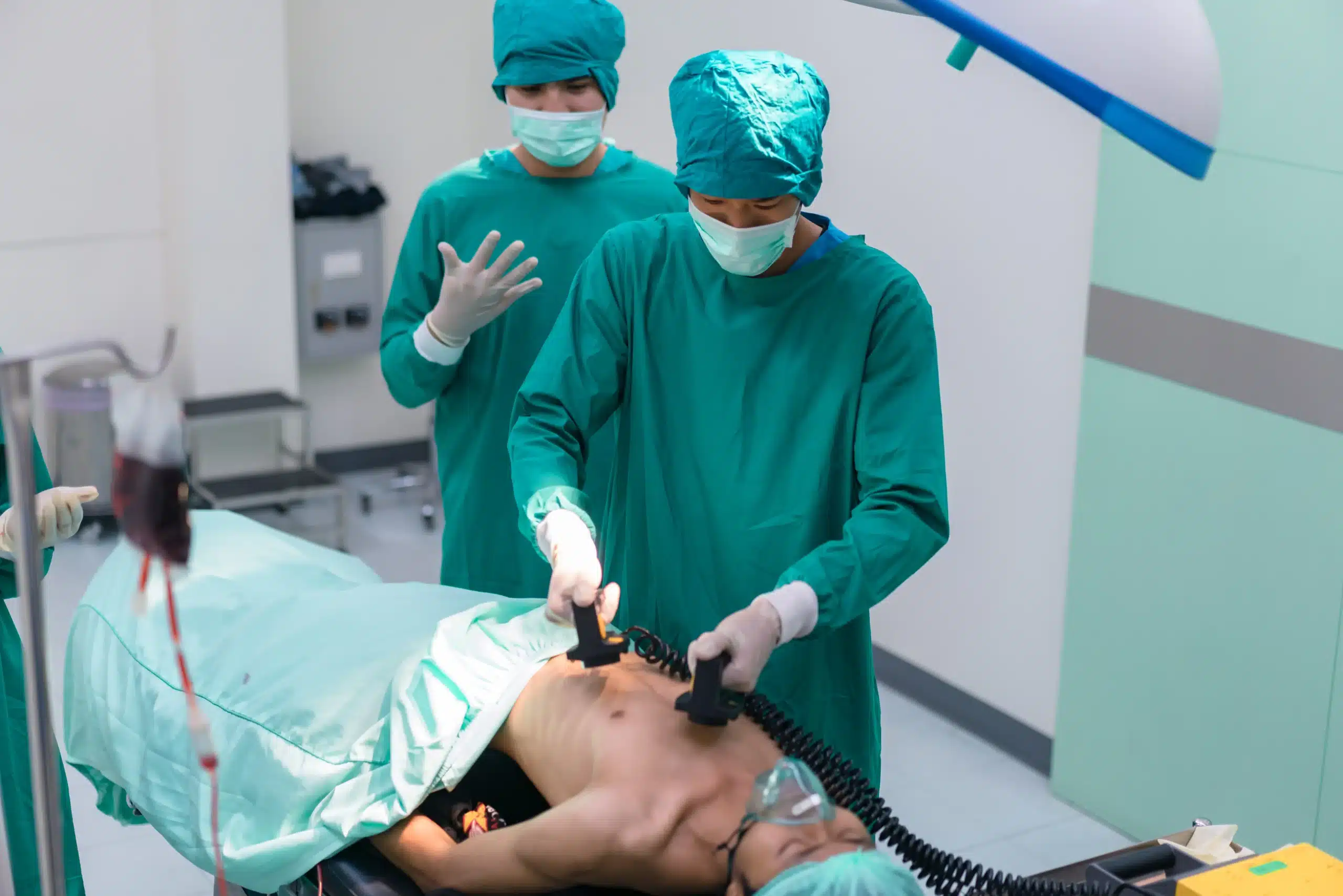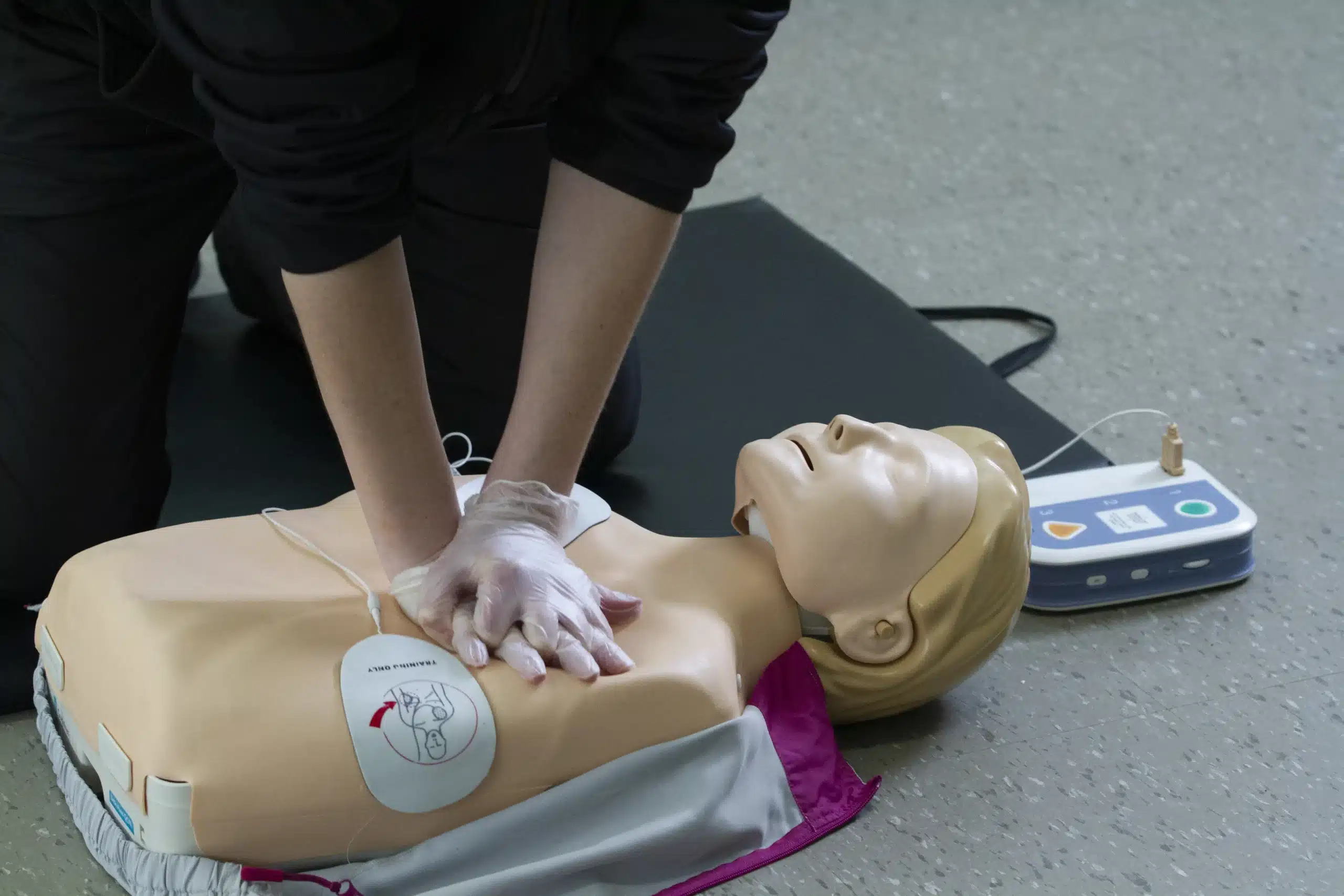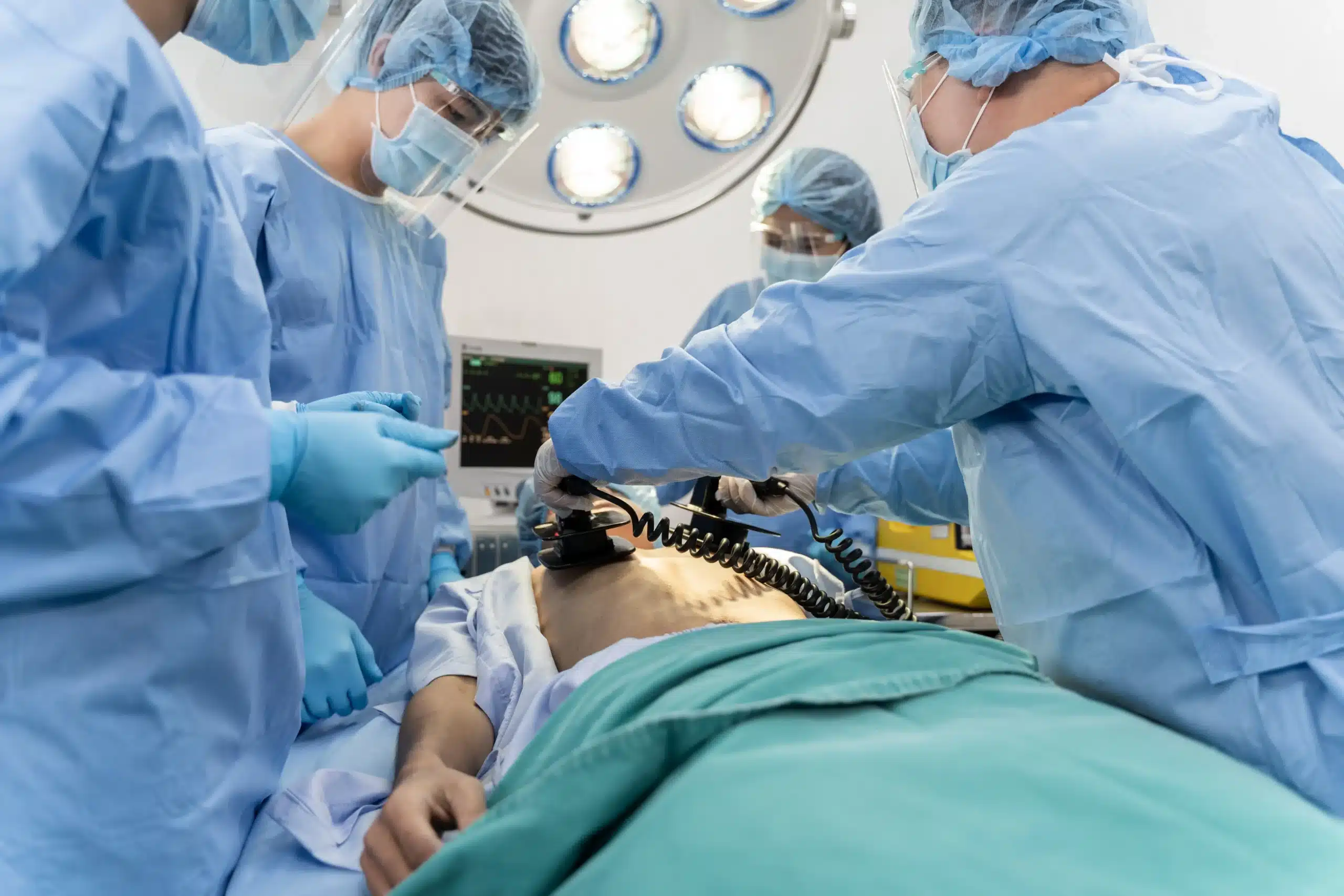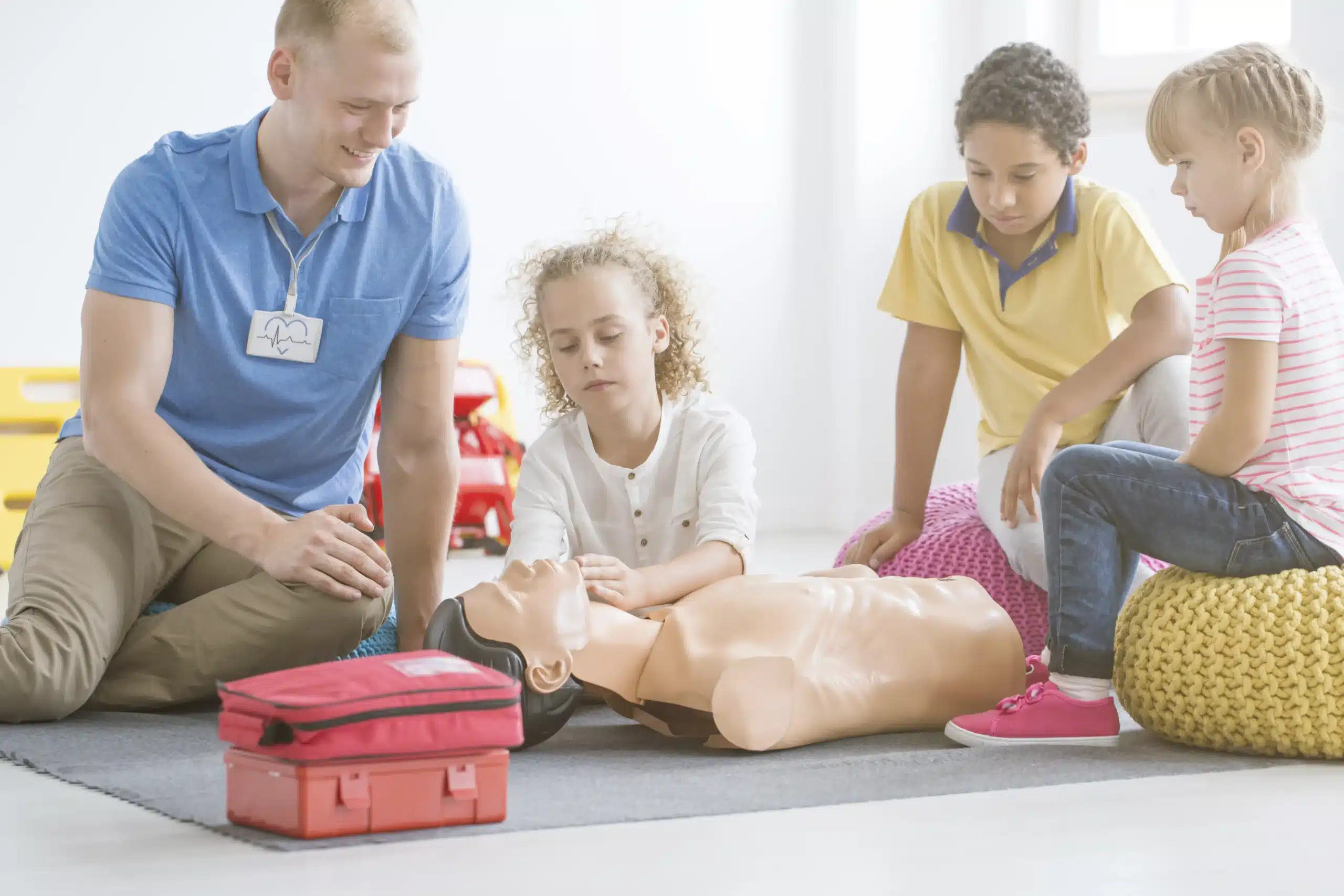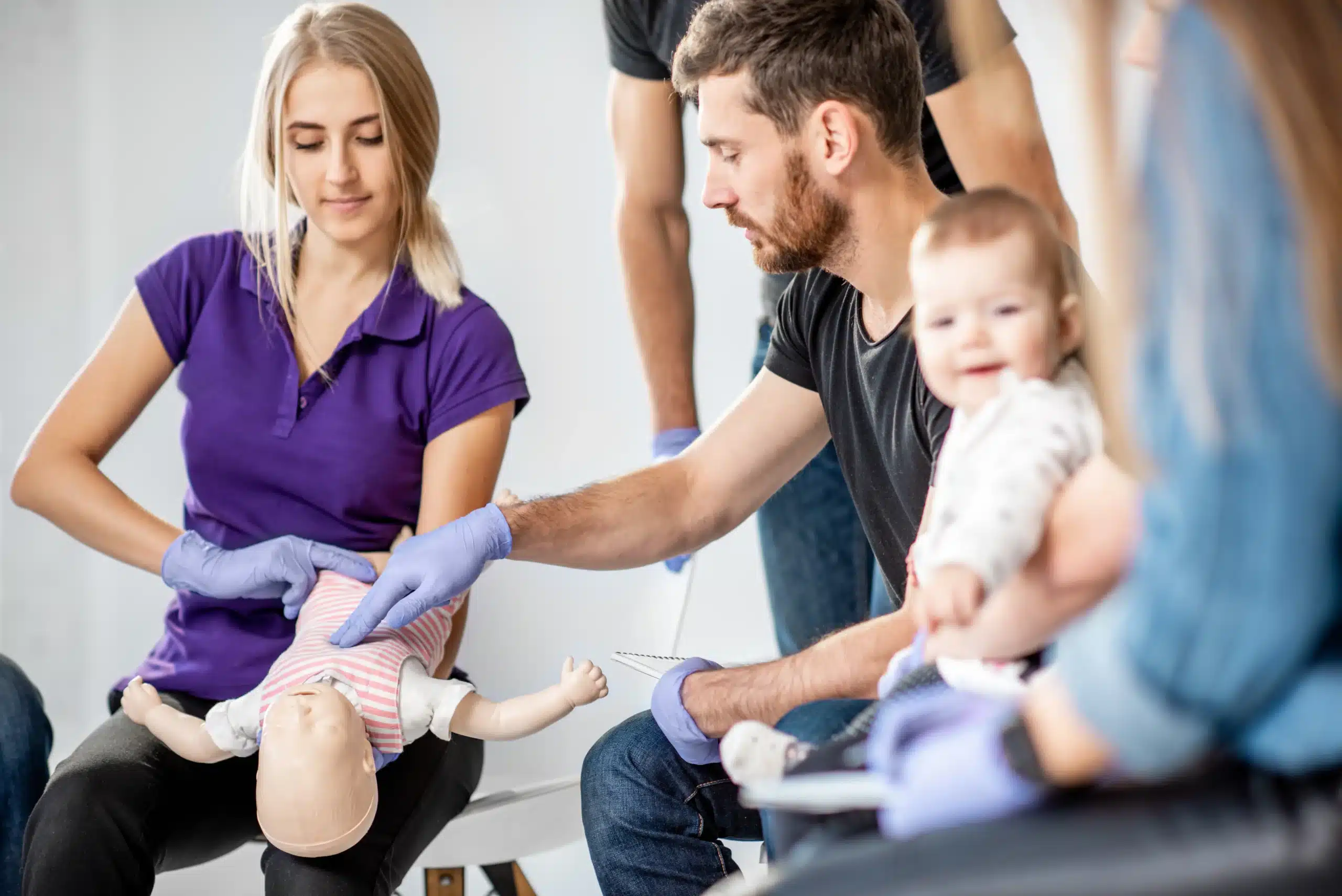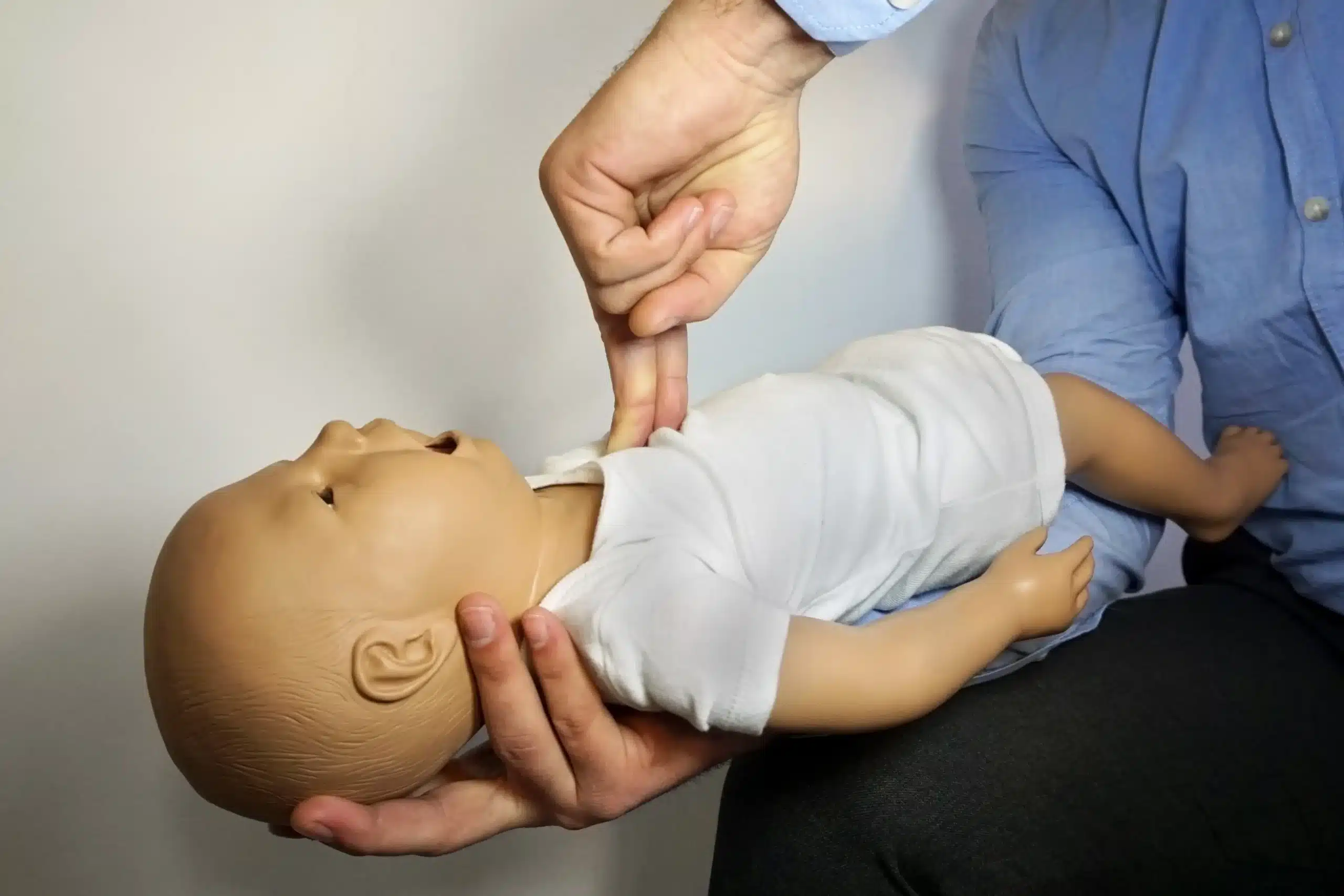Emergencies can happen anytime, anywhere. Would you know what to do if someone near you experienced a sudden cardiac arrest? CPR is a life-saving skill that can bridge the gap until professional medical help arrives. This guide is your roadmap to understanding CPR and finding the right training. We’ll explore various CPR course options, including what happens in a class, typical costs, and how to choose a qualified instructor. Whether you’re a healthcare professional, a childcare provider, or simply someone who wants to be prepared, we’ll help you find CPR courses near me and gain the confidence to act quickly and effectively in a crisis.
Key Takeaways
- CPR training empowers you to save lives: Whether you’re a healthcare professional, childcare provider, or simply want to be prepared, CPR certification equips you with essential skills to respond to emergencies.
- Find the right CPR course for your needs: From basic life support to advanced cardiac care, various certifications cater to different skill levels and professional requirements. Explore options like group discounts and low price guarantees to make training more accessible.
- Stay current with your CPR skills: Regular practice and refresher courses are essential for maintaining proficiency and confidence. Keep your certification up-to-date to ensure you’re always ready to respond effectively in critical situations.
What is CPR?
What is CPR?
CPR stands for Cardiopulmonary Resuscitation. It’s a lifesaving technique used when someone’s heart stops beating or they stop breathing. Cardiac arrest, heart attacks, choking, and near-drowning incidents can happen unexpectedly. CPR combines chest compressions and rescue breaths. These actions help maintain blood flow and oxygen to the brain and other vital organs until emergency medical services arrive. Learning CPR equips you to respond effectively in such critical situations. CPR certification courses teach these essential skills and can prepare you to assist family, friends, coworkers, or even strangers.
Why CPR Matters
CPR is crucial because cardiac arrest is a leading cause of death. Sadly, over 300,000 deaths occur annually in the US from cardiac arrest. Learning and maintaining your CPR skills empowers you to act in emergencies, potentially saving a life. A CPR course provides you with the skills and confidence to make a difference. It’s important to remember that CPR skills can decline over time. Less than half of CPR course participants pass a skills test a year after their initial training. Regular refresher training is essential to maintain proficiency and ensure you’re prepared to act effectively when needed. Knowing CPR can give you peace of mind, knowing you have the skills to help in a crisis.
CPR Course Options
Finding the right CPR course is the first step. Luckily, there are options for everyone, from basic life support training to advanced certifications. Whether you’re a healthcare professional, a childcare provider, or just someone who wants to be prepared for emergencies, there’s a course out there for you.
CPR for Everyone
Basic CPR and first-aid certification courses are perfect for anyone who wants to learn these lifesaving skills. These courses cover essential techniques like chest compressions, rescue breaths, and how to respond to common emergencies. In-person training ensures you get hands-on practice and personalized guidance from certified instructors. These fundamental courses empower you to respond confidently in critical situations and provide immediate assistance until professional help arrives. CPR and first aid training are valuable skills for parents, teachers, coaches, and anyone who wants to be prepared.
Advanced Life Support (ALS) for Healthcare Providers
Healthcare providers often require more specialized training. Advanced Cardiovascular Life Support (ACLS) courses are designed for those who direct or participate in resuscitation efforts. These advanced certifications delve deeper into life support protocols and advanced techniques for managing cardiovascular emergencies. PALS (Pediatric Advanced Life Support) certification focuses on the specific needs of infants and children. These courses are crucial for doctors, nurses, paramedics, and other healthcare professionals who need to stay up-to-date on the latest resuscitation guidelines.
Specialized CPR Courses
Beyond the core CPR and first-aid courses, there are also specialized options available. For example, the EMSA Child Care Health & Safety course provides training specifically for childcare providers, covering topics like preventing childhood injuries and illnesses. RQI classes focus on high-quality CPR skills and are often required for specific healthcare roles. These specialized courses cater to specific professional requirements or areas of interest, ensuring you have the precise skills needed for your particular field. This could include settings like summer camps, schools, or fitness centers.
What Happens in a CPR Class?
Knowing what to expect can help you feel prepared and confident on the day of your CPR class. Here’s a general overview of what takes place during a typical CPR course:
Class Length and Content
CPR courses in San Ramon vary in length depending on the certification level. Basic CPR and first-aid classes can often be completed in a single day, while more advanced courses like ACLS and PALS may require two days. The content covers essential life-saving skills, starting with recognizing the signs of a cardiac arrest and activating the emergency response system. You’ll learn how to perform chest compressions, rescue breaths, and use an automated external defibrillator (AED). Many courses also include first-aid training for common injuries like choking, bleeding, and burns. San Ramon CPR courses offer a range of certifications, ensuring there’s a class that meets your specific needs.
Hands-on Practice and Skills Assessment
CPR is a hands-on skill, so expect plenty of practice time in your class. You’ll work with mannequins to simulate real-life scenarios, allowing you to develop muscle memory and confidence in your abilities. Instructors provide guidance and feedback as you practice, ensuring you’re using the correct techniques. Most CPR courses include a skills assessment to evaluate your proficiency. This typically involves demonstrating your CPR and AED skills on a mannequin in front of the instructor. This practical approach is key to mastering the techniques and feeling prepared to respond in a real emergency. After the training, reputable companies like San Ramon CPR Courses offer support resources to help you maintain your skills.
Certification: Process and Renewal
Upon successful completion of the course and skills assessment, you’ll receive your CPR certification card. This nationally recognized certification is typically valid for two years. San Ramon CPR Courses issue American Heart Association certifications, which are widely accepted. As your certification expiration date approaches, you’ll need to take a recertification course to stay up-to-date with the latest guidelines and maintain your credentials. This ensures you’re always prepared to provide effective CPR. CPR certification is an investment in your ability to respond confidently and effectively in critical situations.
CPR Course Costs & Value
CPR course fees vary based on the certification level, the training provider, and your location. Understanding typical costs for different CPR certifications helps you budget effectively. Exploring options like group discounts and low price guarantees ensures you get the best value for your training.
Typical Course Fees
Basic CPR and first-aid certification courses typically cost less than advanced certifications like Advanced Cardiovascular Life Support (ACLS) or Pediatric Advanced Life Support (PALS). Basic courses cover fundamental life-saving skills for everyday emergencies, while advanced courses address more complex medical scenarios for healthcare providers. San Ramon CPR Courses offers a range of CPR and first-aid certification courses, letting you choose the best fit for your needs and budget.
Group Discounts and Packages
Coordinating training for a group, like a workplace or community organization? Look for providers offering group discounts. These discounts can significantly lower the per-person cost, making training multiple people more affordable. Some providers also offer packaged deals that combine certifications, such as CPR and first aid, at a reduced price.
Low Price Guarantees
Finding quality training at a competitive price is important. Seek out CPR course providers with a low price guarantee. This ensures you receive the best value and demonstrates the provider’s commitment to making life-saving skills training accessible to everyone.
Choosing a CPR Trainer
Finding the right CPR trainer is just as important as the training itself. It’s about more than just ticking a box; it’s about gaining the confidence and skills to potentially save a life. Here’s what to look for:
Instructor Qualifications
First and foremost, check your instructor’s credentials. Make sure they are certified by a recognized organization like the American Heart Association (AHA) or the American Red Cross. A certified instructor has met specific requirements and demonstrated the necessary expertise to teach CPR effectively. Look for a training provider, like San Ramon CPR Courses, that prioritizes employing certified instructors. This ensures you’re learning from someone with up-to-date knowledge and best practices. A good training company will also offer ongoing support, like refresher courses and access to updated resources, so you can maintain your skills long after your initial certification.
Training Quality
Quality training goes beyond just the certification. It’s about gaining practical skills and the confidence to use them in a real emergency. Look for courses that emphasize hands-on practice and realistic scenarios. CPR Education highlights the importance of quality CPR training, emphasizing its real-world impact on communities like San Ramon. The best training providers understand that effective CPR can make all the difference in those critical minutes following an emergency. They’ll equip you with the skills and confidence to respond effectively under pressure. A comprehensive curriculum, like the BLS course offered by the AHA, should cover not only CPR but also other essential life support skills.
Accreditation
Finally, confirm that the training provider is accredited by a reputable organization. Accreditation means the program meets established standards for quality and effectiveness. Organizations like the AHA, American Red Cross, and National Safety Council are all well-respected accrediting bodies. Choosing an accredited provider shows a commitment to high-quality training and gives you the assurance that your certification will be widely recognized. Ready Response PA underscores the importance of accreditation, instructor qualifications, and flexible training options when selecting a CPR training provider. These factors contribute to a safe and prepared workplace, ensuring employees receive relevant and effective training.
Find CPR Courses Near You
Finding the right CPR class shouldn’t be a struggle. Whether you need basic CPR training or advanced life support certification, there are resources and options available to suit your needs.
Local CPR Training
San Ramon offers a variety of CPR and first-aid certification courses, from basic life support to advanced certifications like ACLS and PALS. This range of courses ensures you can find training that aligns with your specific requirements. Local providers offer comprehensive in-person training, covering everything from the basics of CPR and first aid to those more advanced certifications. This focus on local training makes high-quality, hands-on learning accessible.
Online Course Finders
If in-person classes don’t fit your schedule, online CPR certifications are an option. It’s crucial to ensure your online certification comes from a reputable organization like the American Heart Association (AHA) or the American Red Cross (ARC). Many jobs require CPR certification, from healthcare workers to those in education, childcare, and even hospitality. A recognized certification ensures you meet these job requirements.
Convenient Locations
CPR training is conveniently located throughout the San Ramon area. Safety Training Seminars, a woman-owned AHA Training Center, provides high-quality American Heart Association BLS, ACLS, PALS, CPR & First-aid courses in San Ramon, CA. Classes are often held at accessible locations like Bishop Ranch 1. Some providers also offer specialized courses like EMSA Child Care Health & Safety and RQI classes, catering to specific professional needs. This variety in course offerings and locations simplifies finding the right training.
Register for a CPR Course
Getting your CPR certification is straightforward. These next steps will guide you through the process:
Steps to Sign Up
-
Choose a CPR training provider: Look for providers accredited by reputable organizations like the American Heart Association (AHA) or the American Red Cross. This ensures your training meets nationally recognized standards and is accepted nationwide. San Ramon CPR Courses offers AHA-certified courses, giving you confidence in the quality of your training. Our low price guarantee makes us an affordable option.
-
Select your course: Consider why you need CPR training. Are you a healthcare provider, a childcare worker, or preparing for emergencies? San Ramon CPR Courses offers various CPR and first-aid certification courses, from basic life support to advanced certifications like ACLS and PALS. We also offer specialized courses like the EMSA Child Care Health & Safety program and RQI classes for healthcare professionals.
-
Compare costs and schedules: CPR course costs vary, so compare options. Review course schedules to find one that works for you. Group discounts are often available, which can make training more affordable for families, workplaces, or community groups.
Online and In-Person Registration
After you’ve chosen a course and provider, registration is simple. Many providers offer both online and in-person registration options.
-
Online registration: Visit the provider’s website, select your course, and complete the registration form. You can often pay online and receive immediate confirmation.
-
In-person registration: Some providers allow in-person registration at their training center. This gives you a chance to ask questions or handle the process face-to-face. For in-person CPR courses in San Ramon, Dublin, and Danville, CA, visit our training facility at Bishop Ranch 1.
Whether you register online or in person, confirm all the course details, including dates, times, location, and any required materials. You’ll receive your certification card after successfully completing the course.
Get Ready for Your CPR Class
So, you’ve signed up for a CPR class—fantastic! Now, let’s make sure you’re completely prepared to get the most out of your training. A little preparation goes a long way.
What to Bring
For most CPR classes, you won’t need to bring much. Comfortable clothing is important, as you’ll be moving around and practicing on mannequins. A notebook and pen are handy for jotting down important notes and reminders. Your training provider will supply the necessary materials, including any textbooks or manuals. When choosing your training provider, make sure they use certified CPR instructors so you receive high-quality instruction on the most effective techniques. A good training company also offers post-training support, such as refresher courses and access to updated resources. This ongoing support will be invaluable as you maintain and improve your skills.
Pre-course Resources
Before class, take some time to familiarize yourself with the basics. The American Heart Association (AHA) offers a Basic Life Support (BLS) course in San Ramon covering CPR and other essential cardiovascular life support skills. Reviewing the course content beforehand can give you a head start and increase your confidence. You can also explore other options, like EMSA Child Care Health & Safety training and RQI classes, to determine if a specialized course better suits your needs. Understanding the different levels of CPR certification—from basic CPR and First Aid to advanced certifications like BLS and ACLS—will help you choose the right course. Knowing what to expect will make you feel more comfortable and ready for your training.
Keep Your CPR Skills Sharp
Once you’re CPR certified, staying up-to-date is key. Regularly refreshing your skills ensures you’re always prepared to act quickly and confidently in an emergency.
Refresher Courses and Recertification
CPR guidelines and best practices can change, so refresher courses are a smart way to stay current. Recertification is typically required every two years, and a refresher course can help you prepare. Think of it like renewing your driver’s license—it keeps your skills and knowledge sharp. Staying current with your CPR certification ensures you’re prepared to handle emergencies effectively.
Practice
Just like any skill, CPR requires practice. Studies show that skill retention drops significantly after just a few months. Regularly practicing the techniques—even on a pillow or mannequin—can make a huge difference in your ability to recall and perform CPR effectively in a real emergency. Check with your local training center for practice resources.
Guideline Updates
Staying informed about the latest CPR guidelines is crucial for providing effective care. The American Heart Association regularly updates their guidelines and recommendations. Subscribing to email updates or following them on social media can help you stay informed about any changes. This ensures you’re always prepared to deliver the most effective CPR techniques.
CPR Training Organizations
Finding the right CPR training organization is key to receiving quality instruction and a recognized certification. Several respected organizations offer CPR courses, each with its own strengths. Let’s take a look at some of the leading providers.
San Ramon CPR Courses
San Ramon CPR Courses offers a comprehensive range of American Heart Association certification courses right here in San Ramon, CA. They provide everything from basic CPR and first aid to advanced certifications like BLS, ACLS, and PALS. They also offer specialized training such as EMSA Child Care Health & Safety and RQI classes. With a focus on affordability and convenience, San Ramon CPR Courses holds classes at Bishop Ranch 1 and issues certification cards upon completion. Serving San Ramon, Dublin, and Danville, they also offer group discounts and a low price guarantee. You can find more information about their CPR and first aid courses here.
American Heart Association (AHA)
The American Heart Association is a leading authority on CPR and emergency cardiovascular care. They develop the science-based guidelines used in CPR training and offer various courses, including Basic Life Support (BLS), Advanced Cardiovascular Life Support (ACLS), and Pediatric Advanced Life Support (PALS). AHA courses are known for their rigor and comprehensive approach. You can find AHA-certified training centers across the country.
American Red Cross
The American Red Cross is another well-respected provider of CPR and first aid training. They offer courses for various levels, from basic CPR for the community to professional-level certifications for healthcare providers. The Red Cross also provides training in other areas, such as disaster preparedness and water safety.
National Safety Council
The National Safety Council is a non-profit organization dedicated to promoting health and safety. While they don’t directly provide CPR training, they offer resources and information on finding certified CPR instructors and courses in your area. They also advocate for workplace safety and injury prevention.
Emergency Care & Safety Institute (ECSI)
The Emergency Care & Safety Institute focuses on providing high-quality emergency care training programs. They offer various CPR and first aid courses, including options for both laypeople and professional rescuers. ECSI emphasizes practical skills development and real-world scenarios in its training.
Related Articles
- Why CPR is Important in Healthcare – San Ramon CPR Classes
- San Ramon CPR Certification: Your Guide – San Ramon CPR Classes
- CPR & First-Aid Training in Danville: Your Complete Guide – San Ramon CPR Classes
- Online CPR Classes Dublin: Your Complete Guide – San Ramon CPR Classes
- CPR Training in Dublin: Your Guide – San Ramon CPR Classes
Frequently Asked Questions
How often do I need to renew my CPR certification? CPR certifications are typically valid for two years. To maintain your skills and stay up-to-date with the latest guidelines, it’s recommended to take a recertification course before your current certification expires.
What if I have a busy schedule and can’t attend a traditional CPR class? Online CPR certification courses offer a flexible alternative to traditional in-person classes. However, it’s essential to choose an online course from a reputable organization like the American Heart Association or the American Red Cross to ensure your certification is widely accepted. Many employers and organizations require certifications from these recognized providers.
What’s the difference between CPR and first aid? CPR focuses specifically on restoring breathing and circulation when someone’s heart stops beating. First aid covers a broader range of medical emergencies, from minor cuts and burns to more serious injuries like fractures and choking. Many CPR courses include basic first aid training, providing a well-rounded skill set for responding to various emergencies.
Are there discounts available for CPR training? Yes, many CPR training providers offer group discounts for families, businesses, or community organizations. This can make training more affordable when multiple people sign up together. Some providers also offer package deals that combine CPR and first aid certification at a reduced price. It’s always a good idea to inquire about potential discounts when choosing a provider.
What if I’m nervous about performing CPR in a real emergency? It’s completely normal to feel nervous about using your CPR skills in a real-life situation. High-quality CPR training emphasizes hands-on practice and realistic scenarios to build your confidence. Regularly practicing your skills and staying up-to-date with refresher courses can help you feel more prepared and confident in your ability to respond effectively in an emergency.
